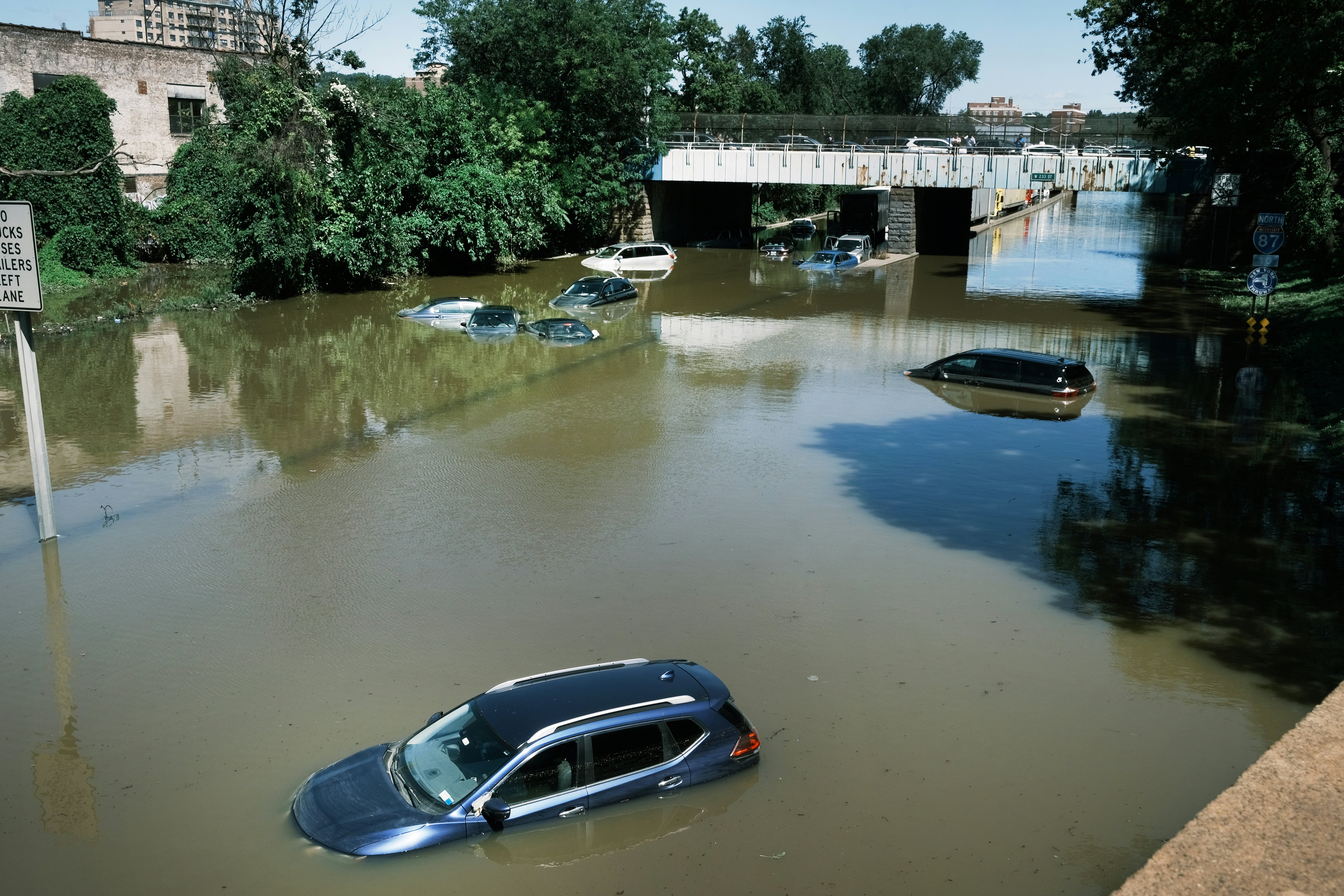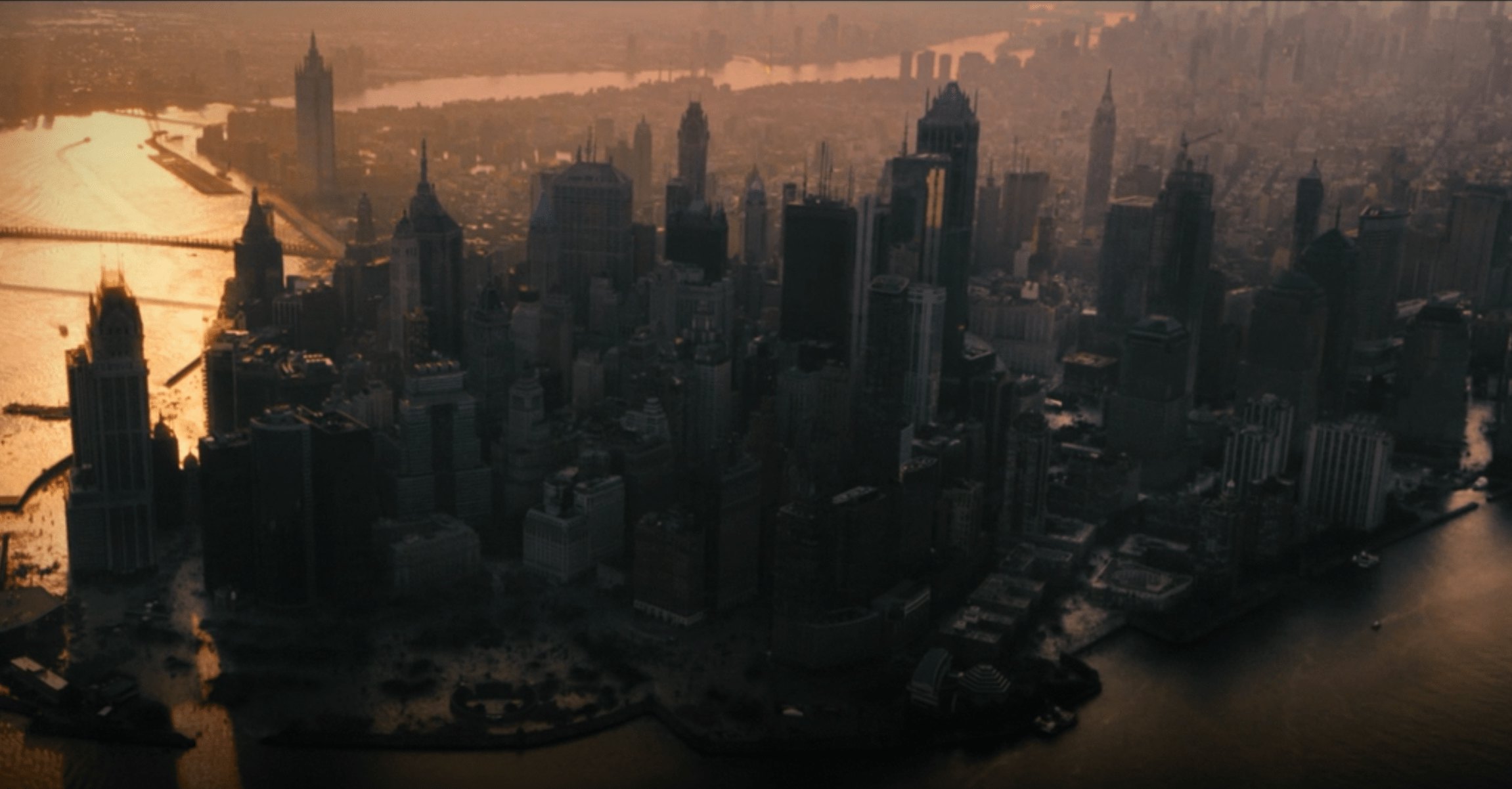
Gotham has always been a grim metropolis teeming with corruption, murder, and lies. But in The Batman — Matt Reeves’ even darker take on the superhero saga — Gotham also becomes overrun by another element perhaps even more dangerous than mob bosses: the climate crisis.
In the film’s third act, The Riddler detonates a series of bombs that destroy the seawalls surrounding the city’s perimeter — the only barrier between rising sea levels and the bustling metropolis. Gotham’s lower-lying areas quickly flood with a swell of water, leaving Batman trapped with the new Mayor-elect in the city’s shelter of last resort: Gotham Square Garden (a surrogate for New York’s real Madison Square Garden).
Since this version of Gotham clearly serves as a stand-in for New York, the movie’s ending carries a surprisingly dark message for the future of Manhattan and the other boroughs as global warming brings rising sea levels and an increased risk of flooding due to hurricanes.
According to Alison Branco, New York Coastal Director and Acting Director of Climate Adaptation for the nonprofit The Nature Conservancy, the movie reveals a stark truth about how the climate crisis is already affecting the lives of New Yorkers.
“Climate change is really on the minds of people in New York,” Branco tells Inverse.
Reel Science is an Inverse series that reveals the real (and fake) science behind your favorite movies and TV.
Is The Batman’s ending realistic?

As we see from a map in The Batman, seawalls surround the main downtown area of Gotham, which seems to serve as the fictional equivalent of Manhattan. In real life, there is no seawall around Manhattan — yet.
“But things similar to that [seawall] have been proposed for the future to help protect Lower Manhattan from sea level rise,” Branco says.
After Hurricane Sandy pummeled New York in 2012, city planners began brainstorming how to make the city more resilient against hurricanes and rising sea levels.
As a result, the city began breaking ground in 2020 on a 2.5 mile-long series of floodgates and walls around lower Manhattan known as the East Side Coastal Resiliency Project, and the Army Corps of Engineers is considering a $119-billion-dollar six-mile-long seawall spanning from Rockaway in Queens to a strip of land south of Staten Island.
Another seawall idea was proposed back in 2016 known as the “Big U.” The original design proposed using “protective landscapes” all around the entirety of lower Manhattan, but more recent updates suggest the project is pivoting more to seawalls, not unlike those seen in The Batman.
“I'm guessing that that's where they got the idea for this wall that they have in the movie,” Branco says.
As to whether it’s possible to blow up a seawall, that’s harder to determine, but seawalls are built to withstand extremely powerful waves.
“I don't really know too much about explosives and big metal walls, but it wouldn't be easy,” Branco says.
Rather than an explosive destroying a seawall, it’s more likely that poorly-funded and ill-maintained infrastructure would cause the seawall to crumble.
The Batman and the climate crisis

The threat of rain is overwhelming in The Batman — nearly every other scene features Batman fighting bad guys as a deluge of rain batters Gotham in the background. As it turns out, intense rainfall and flooding during storms are likely to increase in New York as a result of the climate crisis, which makes storms wetter.
“We're not expecting a lot more rain in terms of annual volume, but what we are expecting is for the rain to come in much more, kind of big, dramatic storms,” Branco says.
New Yorkers saw this intense deluge of rain last summer when the remnants of Hurricane Ida swept over the Northeast, leading to a very fast-moving rainstorm that quickly flooded, killing at least 13 people in the city.
But the other climate crisis threat in The Batman comes from rising sea levels. While Branco says the future sea-level rise projected in The Batman is probably “decades” off, it is a very real threat. A recent report finds coastal areas will experience a one-foot rise in sea levels by the 2050s. Roughly thirty-seven percent of Manhattan will be subject to flooding by 2050, and that number may rise to 50 percent by the end of the century as the city faces a six-feet rise in sea levels.
And that's not even taking into account the other boroughs. In parts of Brooklyn and Queens, there are “whole neighborhoods that are already experiencing chronic flooding,” says Branco.
The city will need to set up programs to help those people “relocate to safer ground,” she adds.
Can New York protect itself from sea level rise and flooding?

As it turns out, seawalls might not actually be the best way to protect Gotham — or New York — from flooding.
“It seems like a great idea until the day that the wall either gets a hole in it or gets blown up by the Riddler,” Branco says.
Seawalls are controversial because they don’t just block rising seawater from the outside, but they could also trap water from intense rainfall inside the city, potentially endangering residents if we don't have proper drainage systems to remove that water.
“A problem with a seawall in a big storm that has not just rising water levels coming from the ocean, but also a lot of rain coming from the interior is it will trap all that rain inside,” Branco says.
Seawalls may be good in the short-term rise in sea levels during a hurricane, but they’re not great for tackling the long-term rise in sea levels due to a changing climate, since that also leads to an increase in groundwater inside the city.
There have been other nature-based solutions proposed to protect New York from storm surges, like oyster walls — also known as living shorelines — and these methods can help reduce erosion flooding.
“But there is nothing that is going to stop the water from rising and that's what everybody needs to remember,” she says.
If the water does rise over the sea wall, there is nothing to prevent the city from flooding. Ultimately, we need to take actions to curb the climate crisis — such as reducing greenhouse gas emissions — if we really want to stop sea levels from rising and protect coastal cities like New York.
“There is nothing we can build that will stop flooding caused by sea-level rise,” Branco adds.
The Batman is streaming now on HBO Max.







